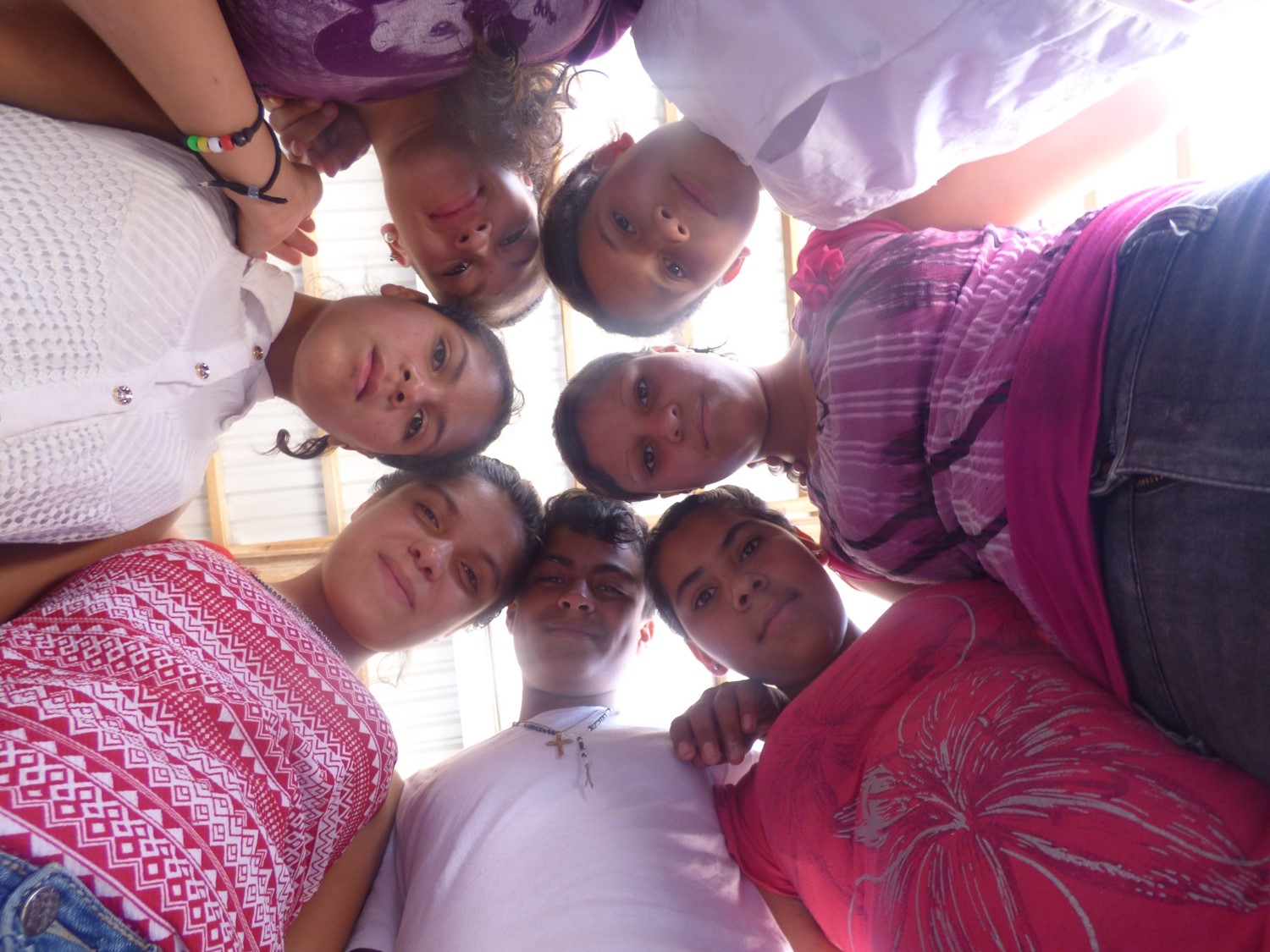
Mission
The mission of Educate2Envision International (E2E) is to equip rural youth in Latin America with the secondary education, resources, and leadership skills they need to build brighter futures and healthier communities.
Life Challenges of the Women Served
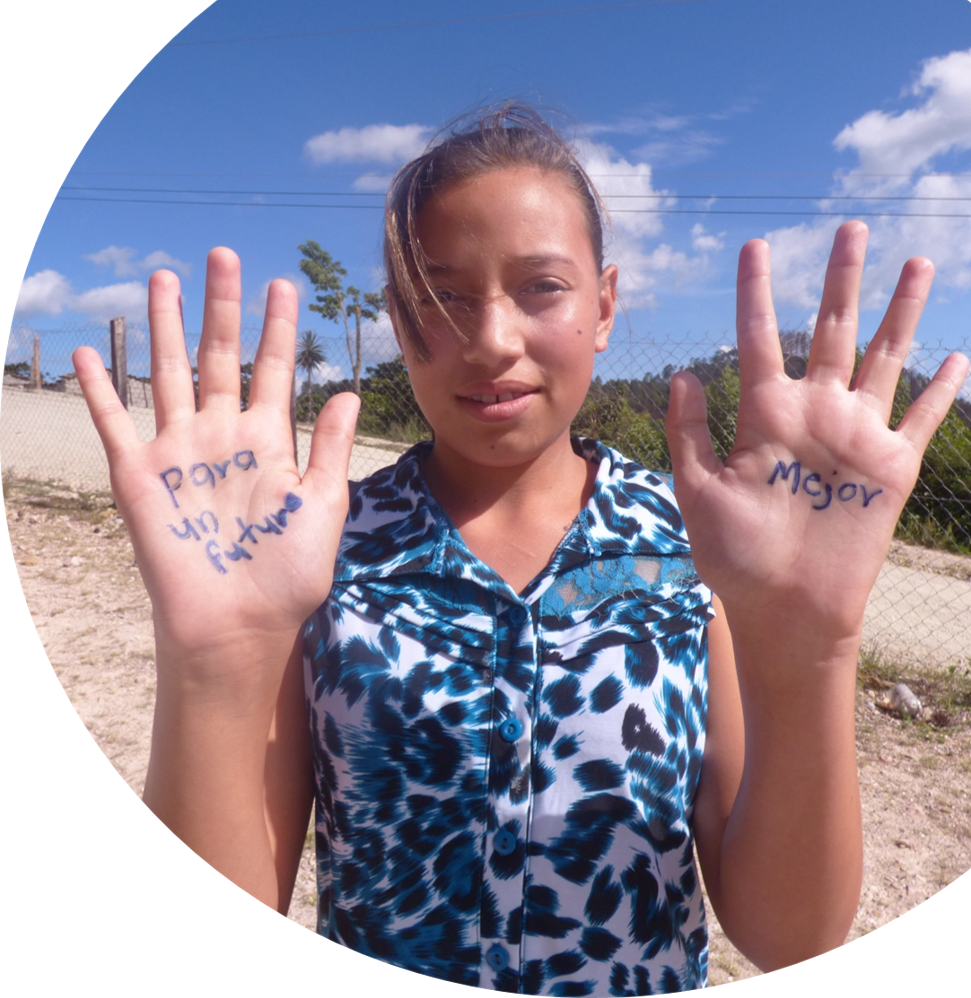 Rural Honduran girls are undervalued and undereducated. They are denied the chance to participate in society beyond the confines of motherhood or as caretakers, with few female role models who have broken out of the mold. Although a lack of access to secondary school affects both genders, the consequences for girls are irreversible. Unable to be considered for employment outside the home, these girls often seek financial security from a partner. This pushes up the rate of adolescent pregnancy and seldom results in economic stability, since these partners also have few years of formal education.
Rural Honduran girls are undervalued and undereducated. They are denied the chance to participate in society beyond the confines of motherhood or as caretakers, with few female role models who have broken out of the mold. Although a lack of access to secondary school affects both genders, the consequences for girls are irreversible. Unable to be considered for employment outside the home, these girls often seek financial security from a partner. This pushes up the rate of adolescent pregnancy and seldom results in economic stability, since these partners also have few years of formal education.
Lack of access to secondary school affects more than 60 percent of the entire youth population in rural Honduran communities. Considering that close to 80 percent of rural families live near or at the poverty line, the lack of educational opportunities all but ensures that youth will be ill-equipped to escape generational poverty. Approximately 70 percent of rural Honduran girls are excluded from secondary education due to economic, geographic, and cultural barriers. The first two barriers are interrelated and speak to the lack of government investment in expanding education access to rural areas. Girls who choose to make the journey to the nearest secondary school increasingly face the risk of physical or sexual assault while walking to or from home.
The primary barrier stopping children from attending secondary school is the cost of getting there, as these schools are often located an hour or more away. The highest fees are for transportation, meals, and lodging for students to attend class Monday through Friday. For parents living on daily labor wages, this can amount to nearly half an average week’s earnings ($50). In addition, some fathers refuse to enroll their daughters in school because they see no value in giving them an education.
The problem can also be framed as a supply and demand imbalance. There are more than 11,000 public primary schools in Honduras but only 900 secondary schools. Although education through 9th grade is legally required, there is no enforcement mechanism or government investments to ensure rural children have affordable access to comply with this mandate.
The situation for post-secondary school is also problematic. Students who exit high school eager to use their diploma to find employment become easily disheartened and frustrated at the lack of opportunities and resources available. Those with college ambitions belong to families who earn a fraction of what tuition costs. Academic scholarships are rare, while need-based scholarships only cover a miniscule percentage of the true costs.
The Project
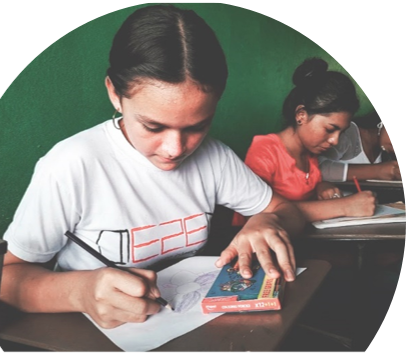 This project allows E2E to elevate the status of girls in rural Honduras by improving their economic independence and enabling them to fully participate in the communities where they live. To achieve this, this project tackles key issues, including a pervasive machismo culture that undermines girls’ capacity to be leaders, a lack of female role models who have achieved higher education or financial independence, and an ill-equipped education system that fails to connect girls to future income-generating opportunities.
This project allows E2E to elevate the status of girls in rural Honduras by improving their economic independence and enabling them to fully participate in the communities where they live. To achieve this, this project tackles key issues, including a pervasive machismo culture that undermines girls’ capacity to be leaders, a lack of female role models who have achieved higher education or financial independence, and an ill-equipped education system that fails to connect girls to future income-generating opportunities.
Less than 30 percent of rural Hondurans complete secondary school, which traps them in a cycle of poverty and isolation. They live in five agriculture communities in the Cantarranas region of Central Honduras where the cost of traditional secondary education is prohibitive. Prior to E2E’s arrival, 6th grade was the highest academic achievement one could expect to reach.
This project is built on three primary components:
- Improving Secondary School Access: E2E creates access to secondary school in communities where it was previously nonexistent. For this to happen, it is essential that parents, especially mothers, see the value in providing girls this education. To help convince them, mothers will be invited to join mother support groups and to participate in E2E’s family garden program. Over the years, E2E has learned that mothers can be key enablers to their daughters’ education. Family gardens and women’s support groups have been shown to motivate mothers to put their girls in school and keep them enrolled through graduation.
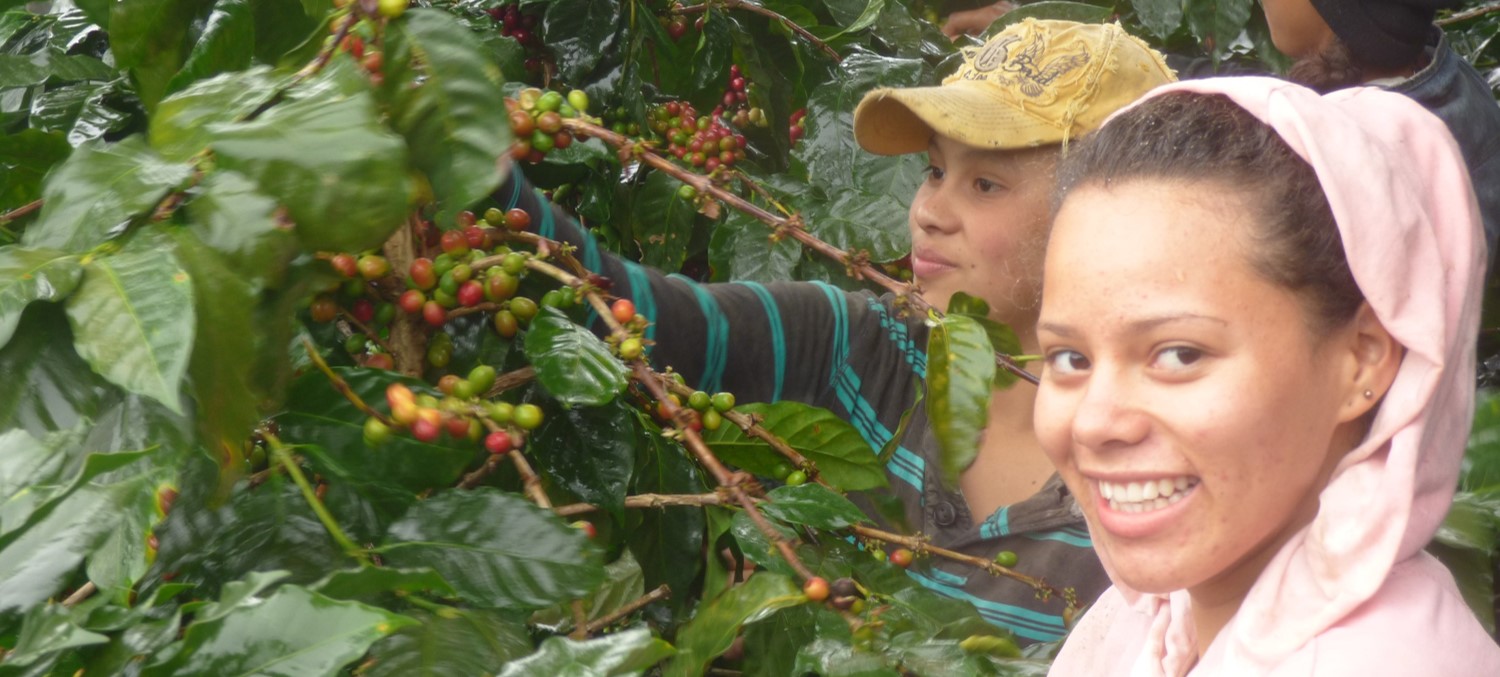
Mothers’ groups, include a safe space for mothers to receive support from a team of psychologists and join workshops focused on issues such as women’s rights, parenting adolescents, and intimate partner violence. They are facilitated by a community volunteer who is overseen by an E2E staff psychologist.Family gardens, also referred to as kitchen gardens, are considered a best practice globally on raising family nutritional intake, but more importantly, bolstering the standing of women in their family and community. Family gardens are small household plots that provide vegetables for families that otherwise would be restricted to corn and bean diets. For some mothers in the pilot, surplus crops were sold in the community to support income diversification for the family. Working with trained agronomists, mothers will learn new farming techniques and receive necessary startup input. The family gardens have been shown to be self-sustaining and self-replicating in a previous pilot. Once mothers have been trained for a full year, they retain the knowledge and continue the upkeep of their gardens without the continued supervision of the agronomist consultant. In fact, E2E has seen mothers help neighboring families by sharing seeds, thus growing the reach of the project organically.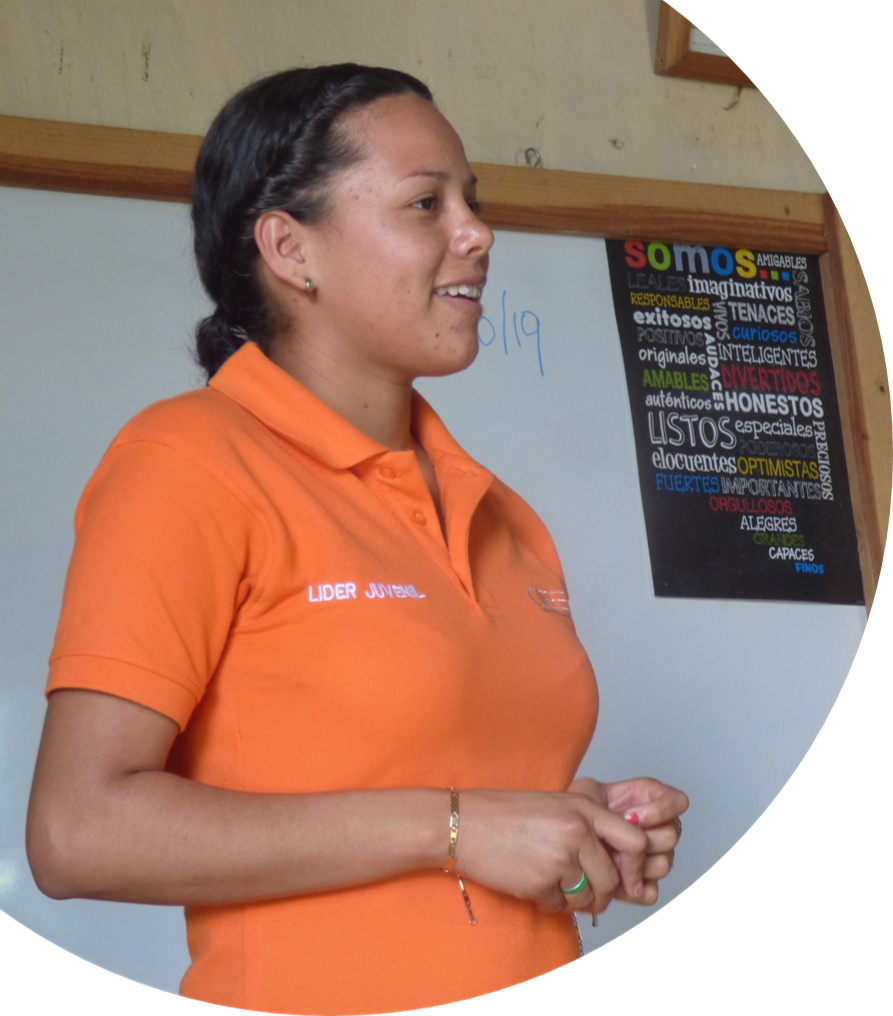 E2E will select participants for the family garden project and the women’s support groups with input from the other mothers and community members to help identify and recruit families that are currently not sending their girls to secondary school. In E2E’s pilot program, inviting mothers to participate in mothers’ groups and family gardens helped create positive attitudes around girls’ enrollment in school. And by using an alternative education model that uses flexible class schedules, local talent, and low-cost tuition, E2E ensures rural youth have an affordable option to continue studying after primary school. When E2E establishes secondary schools in new communities, almost all of the first cohort represent the first in their families to study beyond 6th grade, demonstrating the unprecedented nature of this newfound access to education.
E2E will select participants for the family garden project and the women’s support groups with input from the other mothers and community members to help identify and recruit families that are currently not sending their girls to secondary school. In E2E’s pilot program, inviting mothers to participate in mothers’ groups and family gardens helped create positive attitudes around girls’ enrollment in school. And by using an alternative education model that uses flexible class schedules, local talent, and low-cost tuition, E2E ensures rural youth have an affordable option to continue studying after primary school. When E2E establishes secondary schools in new communities, almost all of the first cohort represent the first in their families to study beyond 6th grade, demonstrating the unprecedented nature of this newfound access to education.
E2E has witnessed how their youth-led community projects address key challenges the community faces while simultaneously building the leadership skills of participating youth. This is especially transformative for adolescent girls who are often the most timid and sidelined – a trait usually adopted throughout childhood having witnessed their mothers’ treatment within the home.
- Promoting Girls Leadership and Empowerment: A unique element of the E2E curricula is youth leadership. Students receive training from grades 7 – 9 on designing and implementing low-cost, high-impact solutions that address local needs. Once students reach high school (grades 10 – 12) they are eligible for paid internships as the new trainers of the program.Beginning in 7th grade, E2E teaches students leadership and community development skills. They learn how to conduct community surveys, focus groups, and household surveys. They use that knowledge to create proposals, budgets, and project plans to design and implement community development projects. Students tackle such issues as access to sanitation and clean water, food security, adult illiteracy, mosquito-borne illnesses, and elder care. The training for youth leadership is facilitated by Peer Trainers, former E2E students who excelled at the leadership component of their studies. This is a paid internship allowing youth to earn an income. These Peer Trainers are excellent role models for youth because they demonstrate how leadership can be practically applied.
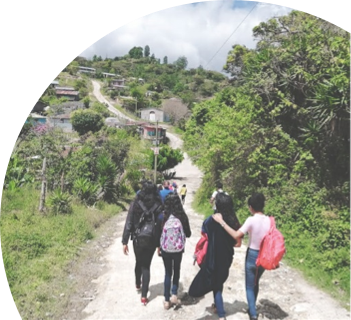 E2E will identify and train 50 young women to be Peer Trainers. They will be trained by E2E staff, E2E graduates, and partner NGOs, and supported to deliver leadership training in their own communities and neighboring ones. The Peer Training is delivered over six months, beginning with socioemotional skills to lay the groundwork for leadership building. Students then assess the current landscape of the country as a whole and in their own communities regarding social, economic, environmental, and political concerns. Lastly, students collaborate on drafting the community of their dreams and they develop project management skills to start practicing their skills in a real-world setting.Peer Trainers are chosen based on input from their teachers and other school staff. They are selected because of their high performance in school and their previous interest and engagement with E2E’s community development projects.
E2E will identify and train 50 young women to be Peer Trainers. They will be trained by E2E staff, E2E graduates, and partner NGOs, and supported to deliver leadership training in their own communities and neighboring ones. The Peer Training is delivered over six months, beginning with socioemotional skills to lay the groundwork for leadership building. Students then assess the current landscape of the country as a whole and in their own communities regarding social, economic, environmental, and political concerns. Lastly, students collaborate on drafting the community of their dreams and they develop project management skills to start practicing their skills in a real-world setting.Peer Trainers are chosen based on input from their teachers and other school staff. They are selected because of their high performance in school and their previous interest and engagement with E2E’s community development projects.
- Expanding Post-Secondary School Services: As students complete secondary school, E2E provides them additional guidance and taps their vast volunteer network of working professionals across Honduras to serve as mentors. E2E will provide 25 female graduates with additional skills and guidance on utilizing their education to achieve financial independence as young adults.E2E will provide those services through one of its youth centers (known as a NIDO), which has been established in the Cantarranas region. Within the NIDO, E2E staff and volunteers provide both in-person and virtual job training, guidance counseling, and a gender-sensitive space to attend to the mental health needs of new graduates. E2E provides free gender-sensitive, individualized support to build skills and develop career roadmaps to help them pursue either entrepreneurial endeavors, trade school opportunities, or higher education through distance learning programs or scholarships to attend local universities.
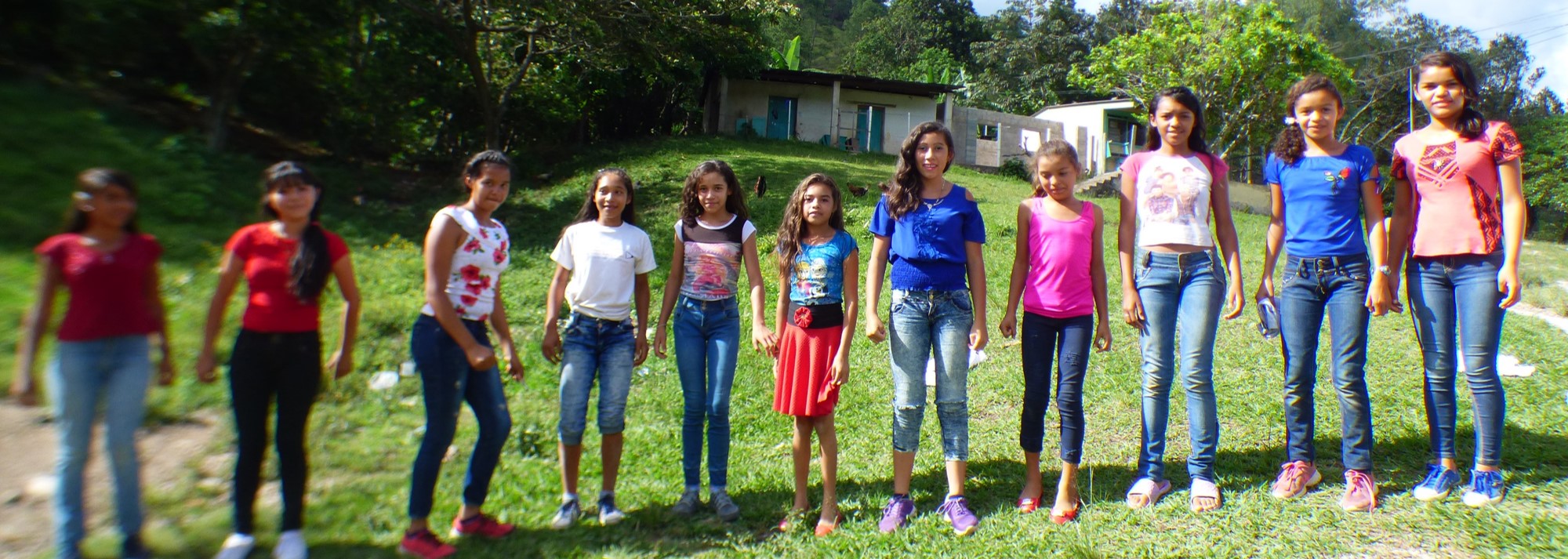 While the post-secondary support services offered at the NIDO are open to all high school graduates, E2E will focus on outreach to girls who recently graduated or who are soon to graduate, to bolster their attendance and participation.
While the post-secondary support services offered at the NIDO are open to all high school graduates, E2E will focus on outreach to girls who recently graduated or who are soon to graduate, to bolster their attendance and participation.
E2E’s beneficiaries include youth ages 12 – 21, including grades 7 – 9 (lower secondary school), 10 – 12 (upper secondary school), and post-secondary school alumni. They represent the children of small agricultural producers, coffee farmers, sugar cane cutters, and shrimp farmers. Average monthly income of most households is $200, but varies as most parents only find seasonal employment and are paid daily wages. Students come from communities that have an average adult education level of 4th grade. Only two of sixteen have a health center in close proximity.
The Peer Trainer program and NIDO support services will grow in self-sufficiency through each consecutive cohort as graduates are promoted to course instructors, tutors, and mentors guiding the incoming group of students.
E2E has a highly participatory approach to designing and implementing programs, including conducting focus groups in target communities to better understand the challenges girls and women face. That data was used to launch and introduce the women’s support group and family garden program. Six months after the pilot gardens were established, E2E surveyed participants and learned that the gardens positively improved the nutritional intake for their families and increased women’s self-worth as men began to support their wives with the upkeep of the gardens.
E2E also used focus group discussions to identify resources most in demand for secondary school graduates, including computer literacy, financial literacy, public speaking, business planning, and trade school opportunities. Finally, E2E continually gathers data from the teachers, mostly female, and community members, to better understand what elements of the leadership curricula have the greatest impact and what might be most relevant to girls.
Girls’ education, particularly secondary school, is a high-returning investment. Not only does it improve women’s wages and families’ nutrition, it reduces the incidence of child marriage and empowers women’s participation in the economy. E2E has collected testimonials from girls that have confirmed that both access to its school and leadership training have enabled them to gain newfound confidence, overcome fear of public speaking, and inspired them to pursue future goals that break away from the status quo. This project will also enable job training, guidance counseling, and a gender-sensitive space to attend to the mental health needs of new graduates, which currently does not exist in the region, building the capacity and self-sufficiency of the girls.
This project will directly benefit 125 girls and will leave them with life-changing achievements and the potential for enhanced economic stability in the future: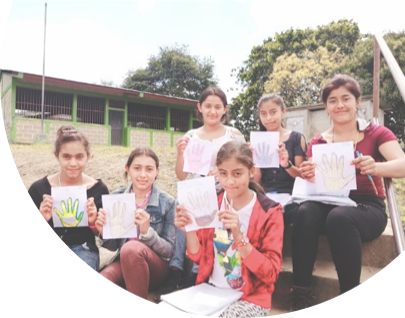
- 50 at-risk girls, the children of the mothers participating in the garden project, are enrolled in secondary school or do not drop out of school.
- 25 girls who have completed secondary school or in their final year of high school are on the path to either higher education or employment.
- 50 girls become certified Peer Trainers, leading community development projects and replicating E2E’s leadership training among younger peers.
This project indirectly benefits 400 family and community members. Approximately 200 individuals (male and female), the family members of the 50 mothers who start family gardens, will benefit from improved nutrition. This is the result of their harvest and the profit from vegetable sales in the community. From E2E’s expanded cohort of girls working as Peer Trainers, an additional 80 secondary school students will receive their leadership training and spearhead community development projects such as dengue prevention, anti-drug campaigns, and reforestation, building their self-esteem and leadership capacity. An estimated 50 – 100 families in the community will benefit from these community development projects.
E2E also anticipates that when neighboring communities witness the benefits girls reap from the girl-specific, post-secondary-school support services, there will be an increased demand for those services. E2E plans to offer those on a sliding scale fee-for-service basis to help the NIDO become self-sufficient. E2E anticipates that an additional 50 young people (both boys and girls) will take advantage of this.
Finally, E2E believes that many people, particularly younger girls and their parents, will see the value girls gain from the program and how it differs from the status quo.
Direct Impact: 125; Indirect Impact: 400
UN Sustainable Development Goals
![]()
![]()
![]()
![]()
![]()
Questions for Discussion
- Saby, an E2E 2019 graduate, currently a university student studying Business Administration, said “(E2E) has made me change the way I think.” What do you think this statement implies about the results of this project?
- How do you think an E2E education varies from a traditional education?
- How do you think this project advances gender equality?
How the Grant Will be Used
Together Women Rise’s grant of $50,000 funds a portion of the project for one year, including:
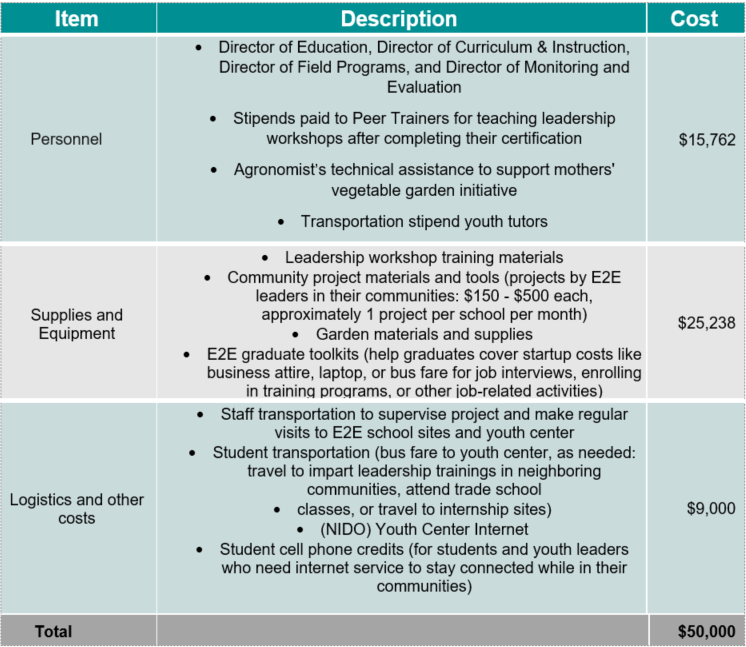
Why We Love This Project/Organization
E2E has garnered international attention for its initiatives to address systemic problems in girls’ schooling in the isolated, rural communities of Honduras. This project will improve the agency, schooling and economic independence of adolescent girls by enabling them to fully participate, engage, and be employed in the rural communities where they live.
Evidence of Success
In each of the 15 of the 16 communities that E2E currently serves, the secondary schools started there were the first in the community’s history. Seventy-seven percent of parents report that E2E represents the only affordable option for secondary school in the region. Prior to arriving, the percentage of 6th grade graduates continuing their education ranged from 0 – 30 percent. This increased to 60 – 90 percent when an E2E school became available.
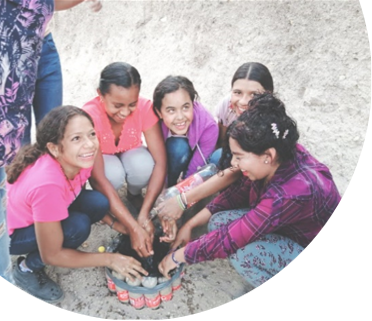 When an E2E school first opens, more than 90 percent of E2E students report they are the first in their families to study beyond 6th grade. Almost every student in the inaugural year states they had never observed peers of similar age participating in community development projects prior to E2E. By 9th grade, 98 percent of E2E students reported that they had an increased belief in the role of youth as changemakers and a more comprehensive understanding of the needs in their communities. This is compared to less than 50 percent prior to enrolling.
When an E2E school first opens, more than 90 percent of E2E students report they are the first in their families to study beyond 6th grade. Almost every student in the inaugural year states they had never observed peers of similar age participating in community development projects prior to E2E. By 9th grade, 98 percent of E2E students reported that they had an increased belief in the role of youth as changemakers and a more comprehensive understanding of the needs in their communities. This is compared to less than 50 percent prior to enrolling.
As a result of the scope of youth-led community development projects over the years, E2E students have been at the forefront of such initiatives as expanding water and sanitation access through construction of bathrooms and water storage units. E2E students single-handedly became the most widespread supplier of “pilas” (water storage units) in the municipality of – the same location of the RISE project. In other examples, students reduced incidences of dengue through an invention that provided a lightweight mesh cover to stop mosquitoes from laying eggs in household water containers. In multiple communities, they become the primary guardians of the elderly, the only group of youth or otherwise who have prioritized the health and wellbeing of seniors living alone without any familial support.
E2E’s awards include the Do Something Award – Top Nonprofit Founder 25 and Under, Ashoka Fellowship, SOCAP Fellowship, Cordes Fellowship, Women Deliver Social Enterprise Finalist, Newsweek “Top 25 Women Under 25 in the World to Watch,” and Top 12 “Amazing Young Entrepreneurs Doing Good” by Forbes.
Voices of the Girls
“The greatest benefit I have received from E2E has been the ability to achieve my goal. Before E2E arrived in our community, we couldn’t study because we didn’t have the money. We had our dreams but you can say we were trapped. But thanks to E2E we’ve been able to reach our dream of graduating and moving ahead.” – Alumna from Central Honduras currently completing her nursing assistant license
“I fully thank God for having allowed the E2E foundation to reach my community. I really don’t know what I would be without it. I don’t think I would be where I am today, I feel so grateful to the foundation and I can’t find the words to tell you everything you have done for me and for the entire community. Without you I would not have gotten where I am today. Thank you, because the foundation has been like that mother who does not abandon her children and she has always been there for us supporting us in everything what we need. I know I have learned a lot, and each of your advice has been good for me, I thank you for everything you have done.” – Suamy, E2E Class of 2021, currently enrolled on scholarship at a bilingual institution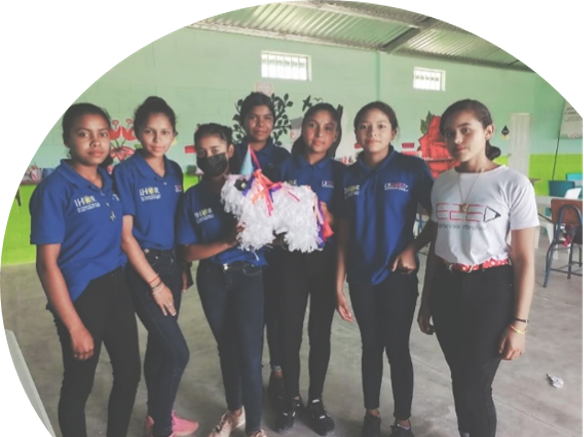
“Well, my life has changed a lot. It has made me change the way I think. I feel like with E2E my life is different now. I feel like I can achieve my dreams. Now I am a person with many values. E2E has taught me many things that I didn’t know — that I shouldn’t just settle with where I am but rather keep moving forward, that the wise isn’t the person who starts the journey but rather the person who finishes it. E2E has taught me to fight for what I want to have in my future. What most makes me happy is helping other students, to teach them what I have learned from E2E. Honestly, I am so happy for everything. – Saby, E2E Class of 2019, currently enrolled in university for Business Administration
About the Organization
Educate2Envision was legally established as a 501c3 nonprofit in November 2010 by founder Katia Gomez. By 2011, E2E had begun the process of establishing its first secondary school located in Central Honduras – the same community that served as the inspiration for E2E after Katia visited as a college student in 2009. It was on this volunteer trip that she became aware of the secondary education crisis that touched nearly every rural Honduran community but was rarely discussed among development organizations. In 2012, E2E began integrating leadership training and youth-led community development as a part of its secondary school model. In 2016, the first NIDO (youth center) was opened to serve as the technology and coworking hub for youth leaders from surrounding rural villages. The second NIDO opened in Southern Honduras in Summer 2022, and beyond the regular programming, it will provide more job skills training and mental health support.
Where They Work
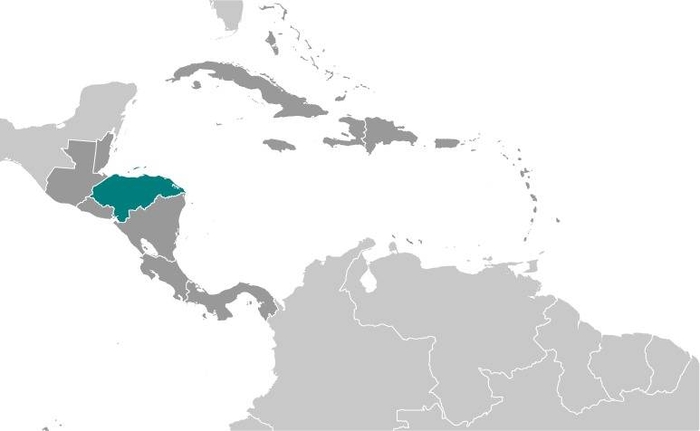
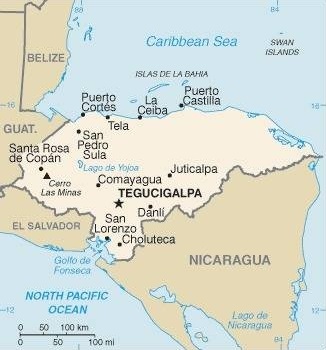
Honduras is a country the size of Tennessee, home to 9.5 million Spanish-speaking people. The majority (48 percent) are Protestant or Catholic (34 percent). It is subtropical in the lowlands and temperate in the mountains. The Caribbean shoreline includes the virtually uninhabited Mosquito Coast.
Gender inequality is the norm in Honduras, especially in rural areas. In this patriarchal society, the men usually make all the decisions. Despite legislation, many women face domestic violence and discrimination in the workplace.
Although Honduras has the second fastest growing economy in Central America, the COVID-19 pandemic and two hurricanes have impacted it considerably. It also faces major long-standing challenges, including profound income inequality. More than two-thirds of Hondurans live in poverty and 20 percent endure extreme poverty, living on less than $1.90 per day. E2E works in the Honduran regions of Francisco Morazan, El Paraiso, Comayagua, Choluteca, and La Paz. Approximately 75 percent of the rural population live in the interior of the country where poverty is most pronounced and prevalent.
Chronic corruption pervades the political and justice systems and allows human rights violations to typically end in impunity. Gang activity is widespread and often includes extortion, violent street crime, rape, narcotics, and human trafficking. The murder rate is among the highest in the world. Those most at risk for violence include women, journalists, environmentalists, and those in the LGBTQ community.
After the former president was extradited to the US on drug trafficking and gun charges, Xiomara Castro became the first woman president in 2022. Running on a platform to cleanup corruption and defend human rights, she won widespread support and secured the most votes in Honduran history.
A Closer Look at Secondary Schools in low Income Countries
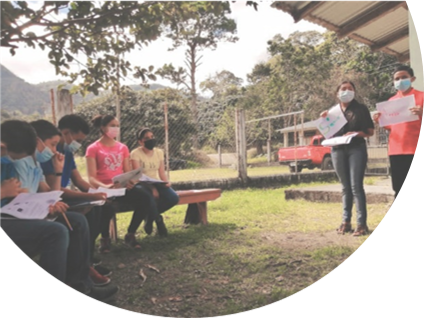 More children around the world have access to primary school, but achieving a secondary education (high school or higher) remains challenging. In fact, the upward spike in the number of children completing primary school is placing pressure on the governments of low income countries to meet the demand for secondary education. Today, many countries in Latin America and the Caribbean, East Asia, the Middle East, and parts of Africa are struggling with how to provide the knowledge adolescents need to either go to college or join the workforce.
More children around the world have access to primary school, but achieving a secondary education (high school or higher) remains challenging. In fact, the upward spike in the number of children completing primary school is placing pressure on the governments of low income countries to meet the demand for secondary education. Today, many countries in Latin America and the Caribbean, East Asia, the Middle East, and parts of Africa are struggling with how to provide the knowledge adolescents need to either go to college or join the workforce.
Unfortunately, a gap persists. For instance, more than half of children in Africa are precluded from a secondary education. As is often the case, girls suffer the most. In Kenya, for instance, there are 70 girls for every 100 boys who complete primary school. But the ratio falls to 48 girls for every 100 boys for secondary school.
According to the World Bank, the failure to educate girls costs the world $30 trillion in lost earnings and productivity. Women with a secondary education earn twice as much as women with no education. An education narrows the pay gap with men and it increases self-confidence and decision-making power. Women also invest more of their earnings back into their families than men do, so the whole family benefits when mothers can earn.
Increasing the number and quality of secondary schools in low income countries will take both investment and an attitude change. In essence, students and parents must come to understand the value of an education. In addition, like the E2E approach, secondary schools must offer an education that truly prepares students for the labor market or civic participation.
Source Materials
- https://www.theguardian.com/global-development/poverty-matters/2011/oct/25/developing-countries-secondary-education-challenge
- https://www.globalcitizen.org/en/content/10-barriers-to-education-around-the-world-2/
- https://www.worldbank.org/en/topic/education/overview
- https://www.mathematica.org/blogs/supporting-secondary-education-in-developing-nations
- https://humanjourney.us/health-and-education-in-the-modern-world/education-in-the-developing-world/
- https://www.cia.gov/the-world-factbook/countries/honduras/summaries/#introduction
- https://travel.state.gov/content/travel/en/traveladvisories/traveladvisories/honduras-travel-advisory.html
- https://www.hrw.org/americas/honduras
- https://www.worldbank.org/en/country/honduras
- https://www.american.edu/cas/economics/ejournal/upload/lomot_accessible.pdf
- https://borgenproject.org/tag/poverty-in-honduras/#:~:text=Around%2075%20percent%20of%20the,employment%20opportunities%20in%20rural%20Honduras
